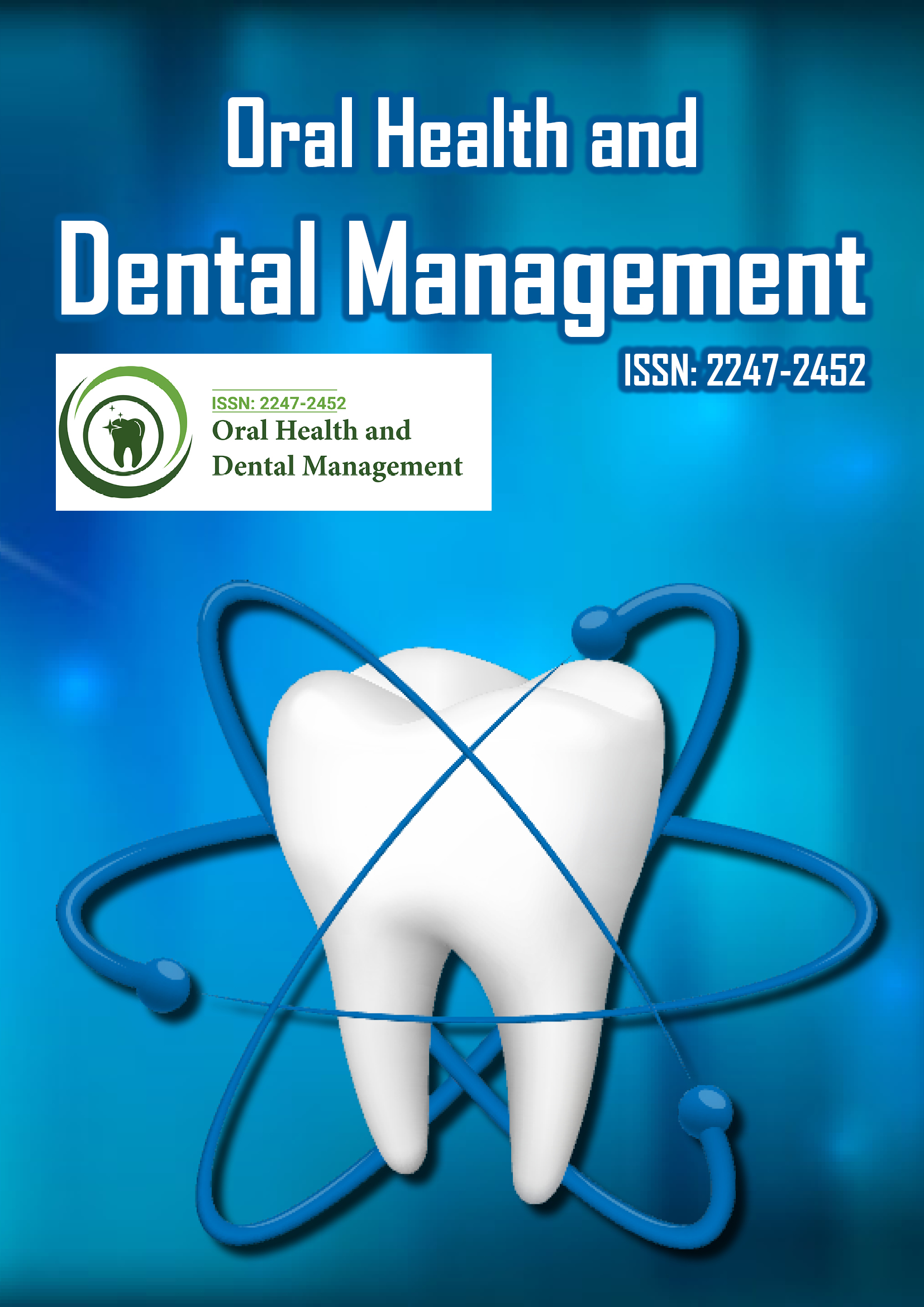Indexed In
- The Global Impact Factor (GIF)
- CiteFactor
- Electronic Journals Library
- RefSeek
- Hamdard University
- EBSCO A-Z
- Virtual Library of Biology (vifabio)
- International committee of medical journals editors (ICMJE)
- Google Scholar
Useful Links
Share This Page
Journal Flyer

Open Access Journals
- Agri and Aquaculture
- Biochemistry
- Bioinformatics & Systems Biology
- Business & Management
- Chemistry
- Clinical Sciences
- Engineering
- Food & Nutrition
- General Science
- Genetics & Molecular Biology
- Immunology & Microbiology
- Medical Sciences
- Neuroscience & Psychology
- Nursing & Health Care
- Pharmaceutical Sciences
Perspective - (2024) Volume 23, Issue 4
The Impact of COVID-19 on Pediatric Dental Emergency Management
Thomas Bennett*Received: 29-Nov-2024, Manuscript No. OHDM-24-28395; Editor assigned: 02-Dec-2024, Pre QC No. OHDM-24-28395 (PQ); Reviewed: 16-Dec-2024, QC No. OHDM-24-28395; Revised: 23-Dec-2024, Manuscript No. OHDM-24-28395 (R); Published: 30-Dec-2024, DOI: 10.35248/2247-2452.24.23.1124
Description
The COVID-19 pandemic has significantly impacted healthcare systems globally, affecting both routine and emergency medical care. Pediatric emergency dental care, in particular, has seen a marked change in patterns during the pandemic. With widespread lockdowns, the closure of dental offices and significant public health concerns regarding the transmission of the virus, the management of dental emergencies in children has faced several challenges. This perspective article explores the changes in pediatric emergency dental care during the COVID-19 pandemic and provides insight into how the pandemic has reshaped the delivery of dental services to children worldwide.
Before the pandemic, pediatric dental emergencies were managed much in the same way as adult dental emergencies, albeit with specific considerations due to the unique needs of children. Common pediatric dental emergencies include tooth trauma, severe toothaches, infections and abscesses. However, the onset of the COVID-19 pandemic caused a seismic shift in the way these emergencies were handled. Nationwide and global responses to the pandemic included recommendations for limiting non-urgent dental procedures, ensuring patient and healthcare worker safety and minimizing in-person visits to reduce the risk of virus transmission. As a result, many pediatric dental offices and emergency rooms were forced to reduce or delay elective and routine dental care, focusing primarily on managing urgent cases.
One of the most significant challenges faced by pediatric dentists during the pandemic was the restriction on non-essential dental care. This restriction was in line with government-imposed lockdowns and efforts to prevent the spread of COVID-19. Elective dental treatments, such as routine check-ups, cleanings and some preventative measures, were delayed or cancelled. As a result, pediatric emergency dental care became even more critical, as children who had delayed dental care or who faced acute dental issues during the pandemic were more likely to seek emergency treatment. Moreover, with the reduced availability of dental professionals, many children with non-life-threatening but painful dental issues were either left untreated or turned to emergency rooms where dental care was often inadequate or unavailable.
The shift toward telehealth and virtual consultations emerged as a response to the pandemic’s restrictions. In many regions, pediatric dentists offered virtual consultations to assess the severity of dental emergencies provide initial advice and prescribe medication where necessary. These consultations were helpful in triaging cases and directing children to in-person care when absolutely necessary. However, telehealth had its limitations, especially in pediatric dental care, as physical examination and direct intervention were often required for proper diagnosis and treatment. Additionally, virtual consultations were more effective in certain regions where telemedicine infrastructure was well-established, while others faced challenges due to limited technology access or insufficient healthcare support.
Another consequence of the pandemic was the increased use of emergency departments for dental emergencies in children. With the closure or limited availability of pediatric dental clinics, many families sought care in hospital emergency rooms, where they would often encounter longer wait times and less specialized care for dental issues. While emergency rooms could manage some dental emergencies, the lack of specialized pediatric dental care meant that children often faced inadequate or temporary solutions, with the need for follow-up care once dental practices reopened. This diversion of pediatric dental emergencies to emergency rooms strained resources that were already stretched thin due to COVID-19-related surges in other medical needs.
In conclusion, the COVID-19 pandemic has revealed significant challenges and gaps in the delivery of pediatric emergency dental care, both in terms of access to services and the ability to manage urgent dental issues. As the world continues to navigate the ongoing effects of the pandemic, the lessons learned from this crisis should inform future policy and healthcare practices. There is an opportunity to enhance the integration of telehealth, increase awareness of preventive oral health practices and ensure that pediatric dental care is accessible in both routine and emergency situations. Ultimately, addressing these challenges will contribute to better outcomes for children’s oral health, even in the face of future global health crises.
